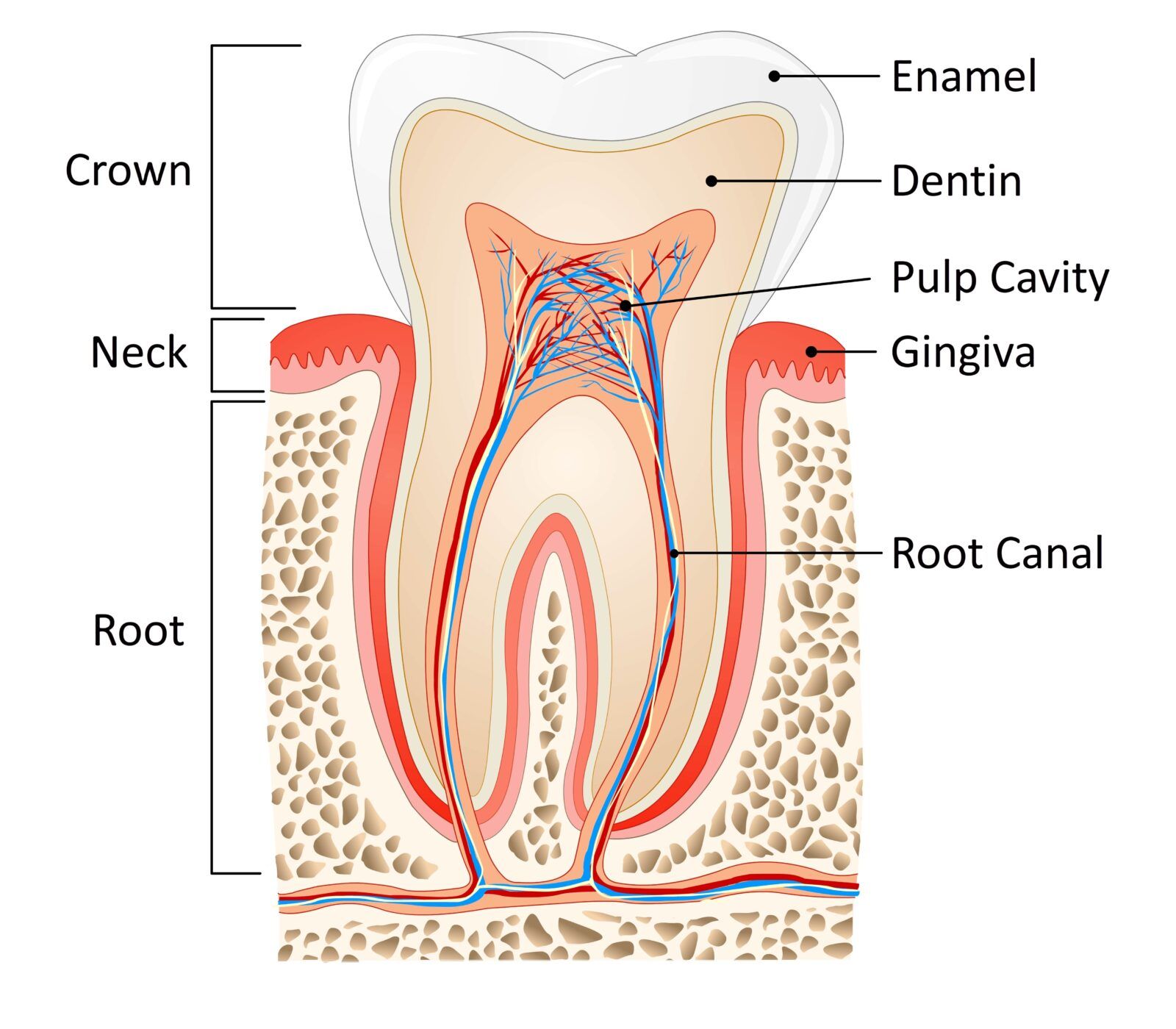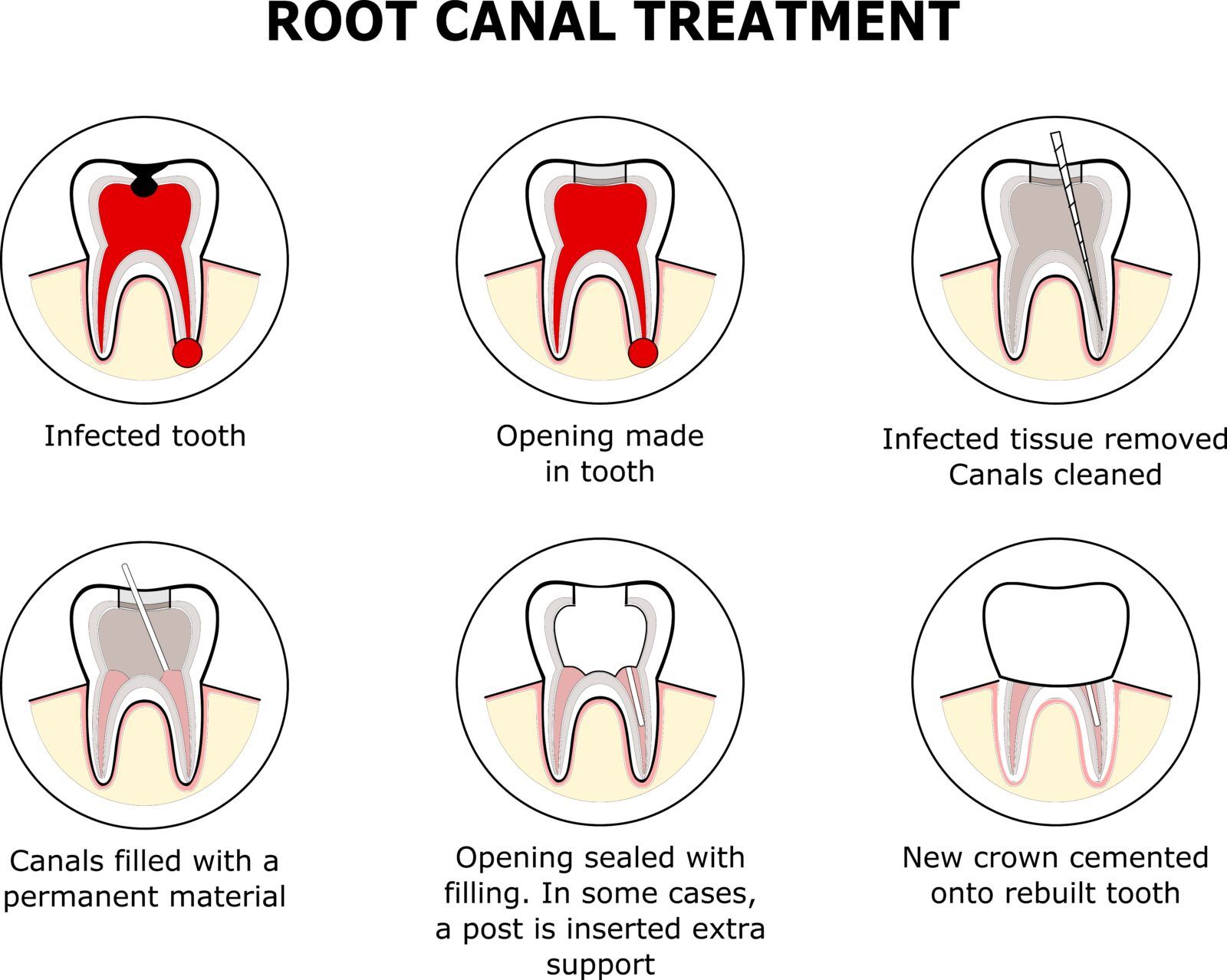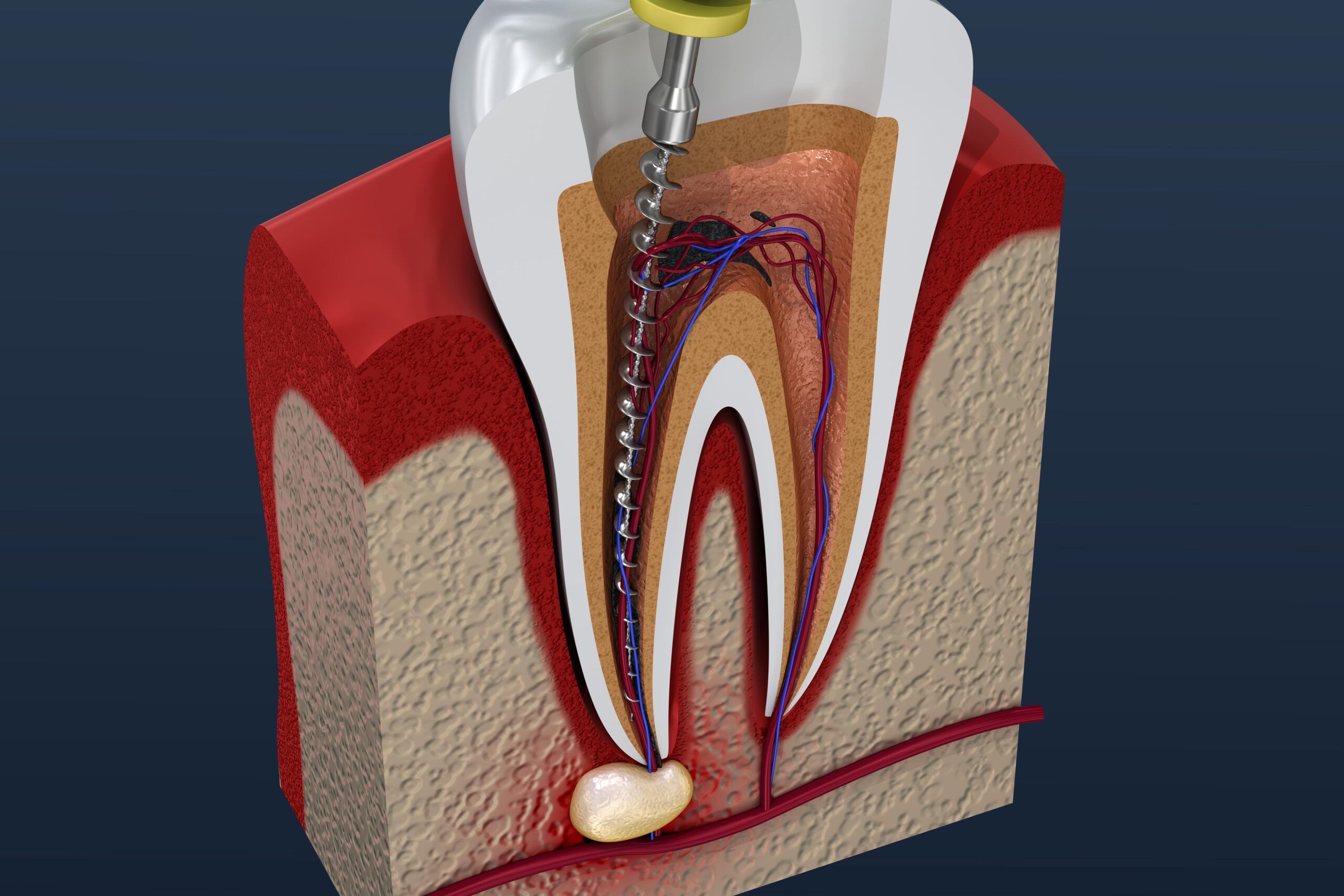The words “root canal” often bring to mind thoughts of pain and discomfort, but the reality of modern root canal treatment is far from the old stereotypes. In this blog, we’ll delve into what root canal treatment entails, breaking down the myths and bringing to light the facts about this common dental procedure. Understanding the reasons for root canal therapy, the advanced techniques used by dentists, and the importance of addressing tooth infections promptly can change your perception and help you recognize the value of this crucial dental treatment in preserving oral health.
In This Blog:
- What is Root Canal Treatment?
- The Procedure: Not as Scary as You Think
- Myths Debunked
What is Root Canal Treatment?
Understanding the different layers of a tooth is essential to comprehending how root canal treatment works. A tooth is primarily made up of three layers: the enamel, dentin, and pulp.

- Enamel: The outermost layer of the tooth, enamel, is the hardest and most mineralized substance in the body. It serves as the first line of defense against physical and chemical damage.
- Dentin: Beneath the enamel is the dentin, a porous tissue that is still hard but not as dense as enamel. Dentin contains microscopic tubules that can transmit sensations to the pulp and is responsible for the majority of the tooth’s structure.
- Pulp: The innermost layer, the pulp, is a soft, living tissue located in the center of the tooth. It contains the tooth’s nerves, blood vessels, and connective tissues, providing the tooth with nutrients and sensory function.
Root canal treatment, or endodontic therapy, is a dental procedure performed to save a tooth that has been badly decayed or infected. This can be caused by deep tooth decay that breaches the outer layers of the tooth, allowing bacteria to reach the pulp. Cracks or chips in the tooth can also provide a pathway for bacteria to enter and infect the pulp. Additionally, trauma to the tooth, such as a blow or impact, can damage the pulp even if there are no visible signs of injury. Repeated dental procedures on the same tooth may contribute to pulp distress and inflammation, leading to root canal issues. In some cases, gum disease can cause infection to reach the root canal system of the tooth. These factors disrupt the health of the pulp tissue and necessitate root canal treatment to remove the infected or damaged tissue and restore the tooth’s health.
Symptoms of root canal problems can vary but often include persistent tooth pain that may be sharp, throbbing, or constant. Sensitivity to hot and cold temperatures that lingers after the stimulus is removed can also indicate a need for root canal treatment, as can pain when chewing or applying pressure to the tooth. Other signs include darkening or discoloration of the tooth, swelling and tenderness in the nearby gums, and the formation of a pimple-like bump on the gums, which could indicate an abscess. In some cases, there may be no pain, but the tooth may feel tender or sensitive when touched. These symptoms indicate that the health of the pulp is compromised and cannot heal on its own, necessitating professional intervention to remove the infected or inflamed pulp, clean and disinfect the root canal system, and seal the tooth to prevent future infection and preserve the tooth’s structure.
The Procedure: Not as Scary as You Think
The root canal procedure is a multi-step process designed to save a tooth that has been damaged by infection or decay. Here are the typical steps involved in a root canal treatment:

- Diagnosis and X-ray: The dentist begins with a thorough examination of the affected tooth and takes X-rays to assess the extent of the damage and to visualize the root canals.
- Local Anesthesia: To ensure the patient’s comfort, the area around the affected tooth is numbed using local anesthesia, making the procedure virtually painless.
- Access Opening: The dentist or endodontist drills a small access hole in the crown of the tooth to reach the pulp chamber.
- Removing the Pulp: Using special tools called files, the dentist removes the infected or inflamed pulp tissue from the pulp chamber and root canals.
- Cleaning and Shaping the Canals: After the pulp is removed, the canals are cleaned and shaped to remove bacteria and debris, and to prepare them for filling. This step may involve the use of various files and irrigation solutions to flush out the canals.
- Disinfection: The cleaned canals are then disinfected with antibacterial solutions to eliminate any remaining bacteria.
- Filling the Canals: Once the canals are clean and dry, they are filled with a biocompatible material, such as gutta-percha, to seal them and prevent bacteria from re-entering. An adhesive cement is also used to ensure a complete seal.
- Restoring the Tooth: The access hole made at the beginning of the procedure is sealed with a temporary filling. Eventually, a permanent filling or crown will be placed to restore the tooth’s shape, appearance, and functionality.
- Follow-up: The patient may need to return for a follow-up visit to ensure the tooth is healing properly and to place the permanent restoration.
This step-by-step process helps to eliminate infection, preserve the natural tooth, and prevent further dental issues, allowing the tooth to function normally after the procedure.
Debunking the Myths
Myth: Root Canal Treatment is Excruciatingly Painful.
Modern dental techniques and anesthesia have transformed root canal treatment into a pain-free procedure in most cases. The discomfort experienced after the procedure is often less than the pain of the infected tooth before treatment.
Myth: It’s better to extract the tooth.
Saving your natural tooth, if possible, is often the best option to maintain proper chewing function and prevent other teeth from shifting, which can lead to jaw problems and bite issues.
Myth: Root Canal Treatment Causes Illness.
Research and clinical evidence support that root canal treatment is safe and effective. There is no valid scientific evidence linking root canal-treated teeth to systemic disease.
Conclusion
Root canal treatment is a misunderstood aspect of dental care that, when explained and understood properly, reveals itself as a valuable procedure for saving teeth and preventing further oral health issues. By separating fact from fiction and understanding the modern advancements in dental care, patients can approach root canal treatment with confidence, knowing it is a routine procedure designed to relieve pain and protect their oral health for the long term.




